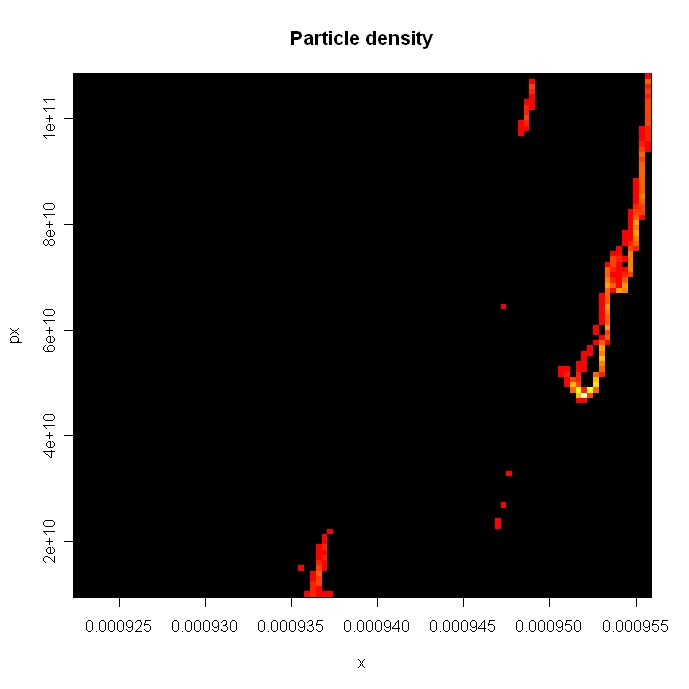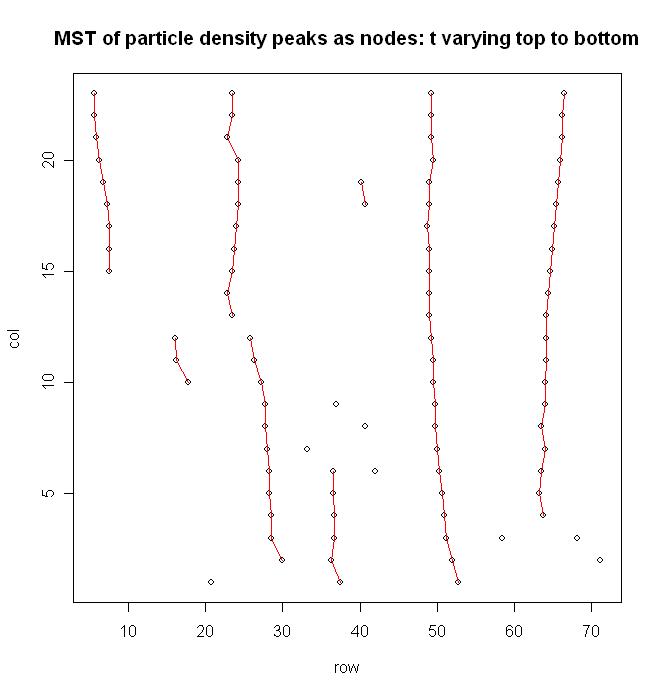Laser Wakefield Accelerator
Table of Contents
Introduction
Laser wakefield particle accelerators have shown the potential to generate electric fields thousands of times higher than those of conventional accelerators. The resulting extremely short particle acceleration distance could yield a potential new compact source of energetic electrons and radiation, with wide applications from medicine to physics. In collaboration with physicists from LOASIS , who investigate laser-plasma internal dynamics by running particle-in-cell simulations, we explore the resulting datasets, providing tools to improve simulation inspection for beam formation. We have designed a framework to automate the data analysis and classification of simulation data.Data analysis and Machine Learning
We have designed a framework to automate the data analysis and classification of simulation data. First, we propose a new method to identify locations with high density of particles (Figure 1) in the space-time domain, based on maximum extremum point detection on the particle distribution.

Fig.1. Locating high density bunch of electrons in a time step with 3.2 x 10^6 particles: (a) searching for beam formation; (b) density map of particles using red-to-white color variation - example of highest density of electrons not being the most energetic group of particles.
We analyze high density electron regions using a lifetime diagram by organizing and pruning the maximum extrema (Figure 2) as nodes in a minimum spanning tree (MST). Second, we partition the multivariate data using fuzzy clustering to detect time steps in a experiment that may contain a high quality electron beam. Finally, we combine results from fuzzy clustering and bunch lifetime analysis to estimate spatially confined beams. We demonstrate our algorithms successfully on four different simulation datasets.
Fig.2. Representation of all time steps of one experiment: (a) bunch-life-time as a pruned MST shown as connected nodes; (b) beam-point candidates combined with fuzzy clustering (click on the image for further details) .
Future Developments
Future work must address the particle history for statistically significant centers using both spatial and energy components. In addition, beam-point candidates could be used by other clustering algorithms. We plan to quantify the beam quality in terms of intra-cluster measures and establish a relationship between the number of the particles in a beam given their membership. Correlating the beam formation to the underlying electromagnetic field remains an open problem. Analysis of 3D simulations have started, which includes spatial dimension z and its momentum pz into account. Besides the massive 2D simulation dataset generation, we expect to parallelize our computations to handle the significantly larger number of particles and overall size of the 3D datasets.
Publications
- Daniela Ushizima, Oliver Rübel, Prabhat, Gunther Weber, E. Wes Bethel, Cecilia Aragon, Cameron Geddes, Estelle Cormier-Michel, Bernd Hamann, Peter Messmer, Hans Hagen. "Automated Analysis for Detecting Beams in Laser Wakefield Simulations". 2008 Seventh International Conference on Machine Learning and Applications, Proceedings of IEEE ICMLA'08, 2008. LBNL-960E.

